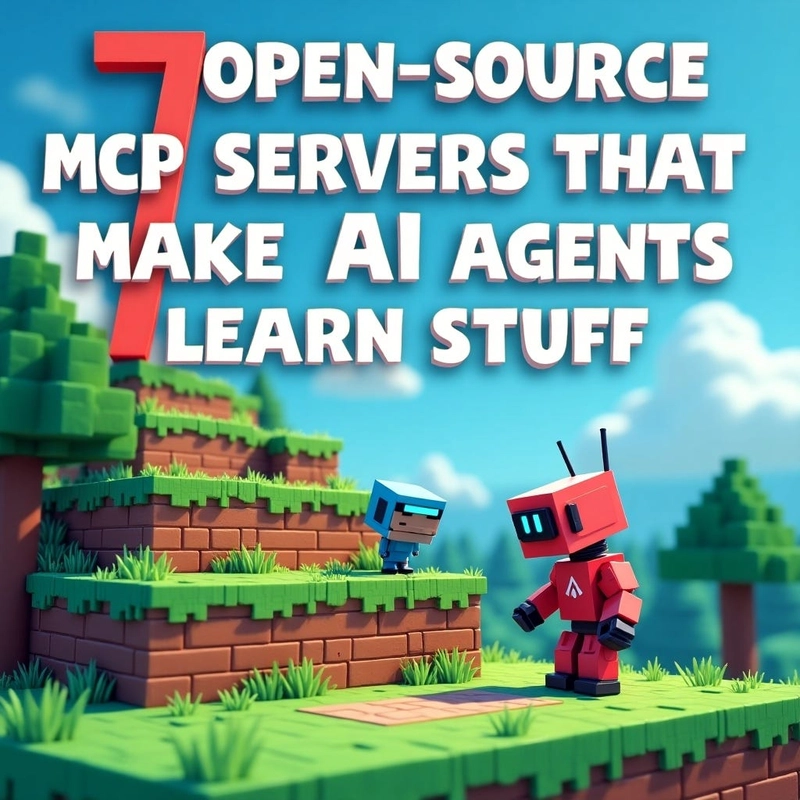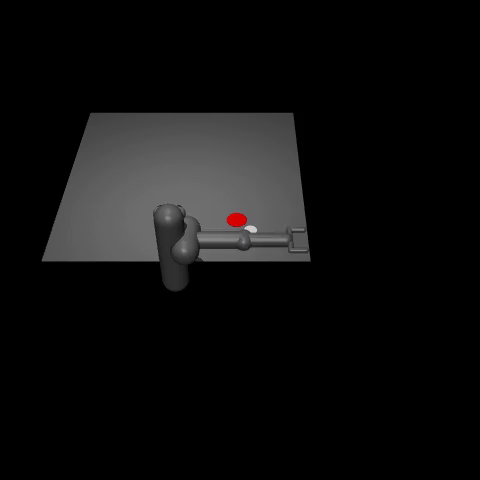Forget robots the smartest AIs are grinding skills in block-based sandboxes with full control

AI agents don’t need robot arms or fancy sensors to learn sometimes, all they need is a sandbox world made of blocks and a good server.
MCP (short for Minecraft Control Panel, though nobody calls it that anymore) has quietly become a go-to playground for training AI agents. It’s visual, programmable, endlessly moddable, and doesn’t fry your GPU. OpenAI even trained one of its agents to play using nothing but video frames and keyboard controls.
But here’s the catch: to get serious with AI in this space, you need full control. Think automation, scripting, state resets, and full integration with your training loops. That’s where these 7 open-source MCP servers come in. They give you the power to do more than just “run a game” they turn MCP into a legit AI lab.
Why MCP is great for AI agent development
MCP gives you everything you’d want in a testbed for AI: a 3D world with physics, a camera view for vision-based tasks, and a bunch of goals you can set like “chop tree,” “craft pickaxe,” or “don’t die to skeletons.”
Unlike real-world robotics, there’s no hardware to maintain, no random dog to walk in front of your training run, and no $1k accident when your bot tries to open a fridge. Everything is sandboxed, repeatable, and cheap to simulate.
MCP worlds are rich enough for reinforcement learning but simple enough to debug. You can even crank up the tick speed to train faster. Agents learn how to move, look around, collect items, and plan multi-step tasks all using real spatial reasoning. Vision, control, pathfinding, memory, decision-making it’s all in there.
That’s why teams like OpenAI and independent researchers alike are using MCP setups to train serious AI. The game’s structure accidentally created the perfect AI dev playground.
What to look for in a good MCP server
Not all MCP servers are built with AI in mind. If you’re trying to plug in your training loop and control an agent, vanilla just won’t cut it.
You need a server that exposes control hooks CLI tools, APIs, WebSockets, or at least a mod/plugin interface. It should let you reset the world, track game state, and script behaviors on the fly.
Bonus points for compatibility with frameworks like Gym, easy Docker support, and the ability to run headless. Plugin ecosystems help too you’ll want to inject tasks, events, and custom rewards without rewriting the whole server.
In short: look for something that lets you control the simulation like a dev, not just play the game like a user.
Press enter or click to view image in full size
7 open-source MCP servers worth using
Here’s your battle-tested lineup of open-source MCP servers that let you control, automate, and train AI agents like a proper dev. No fluff — just tools that get out of your way.
1. Mineflayer
A powerful JavaScript bot framework that connects to MCP servers as a fake player. Great for real-time navigation, crafting, block interaction, and even chat parsing.
npm install mineflayer
Start a bot in 5 lines:
const mineflayer = require('mineflayer')
const bot = mineflayer.createBot({
host: 'localhost',
port: 25565,
username: 'AI_Bot'
})
github.com/PrismarineJS/mineflayer
2. Crafty
A Rust-based MCP server tailored for speed and control. Think high performance with low latency, and built with AI devs in mind. Integrates nicely with event loops and custom agents.
cargo install crafty
github.com/Crafty-Codes/Crafty
3. mc-control
A shell tool for spawning, stopping, and scripting MCP instances — perfect for automating experiments or running lots of isolated AI tasks.
Basic usage:
mc-control start my-test-server
mc-control exec my-test-server "say Hello from bot!"
github.com/devmccontrol/mc-control
4. MineRL
A full research suite for training agents in MCP environments. Comes with Gym-style APIs, mission tasks, and a massive dataset for imitation learning or RL.
Install with:
pip install minerl
Train your first agent:
import minerl
env = minerl.make('MineRLNavigateDense-v0')
obs = env.reset()
Press enter or click to view image in full size
5. mc-server-wrapper
A Python-based server lifecycle manager. Perfect for scripting hundreds of training runs or injecting commands without touching a GUI.
docker run -d -p 25565:25565 -e EULA=TRUE itzg/minecraft-server
Or in Python:
import subprocess
subprocess.run(["java", "-jar", "server.jar", "nogui"])
github.com/itzg/mc-server-wrapper
6. Malmo
Microsoft’s OG AI interface for MCP. Supports custom XML missions, world config, and built-in agent APIs. Slightly dated, but still useful for rule-based environments.
git clone https://github.com/microsoft/malmo
7. PaperMC + plugin stack
The backbone of most serious dev setups. Paper is a blazing-fast fork of Spigot, and with plugins like Denizen or Skript, you can script agent behavior server-side.
Run it:
java -Xmx2G -jar paper.jar nogui
Then add plugins to plugins/ and reload:
/reload
Cool stuff to build with these
Once you’ve got control over the server, the fun begins. These tools let you train agents that go beyond “randomly walking into walls.”
Set up a basic reinforcement learning loop and you can teach an agent to mine wood, craft tools, and avoid creepers. Ramp it up, and you’re looking at agents that can build shelters, farm crops, or even survive full nights in hardcore mode.
Want something weirder? Hook GPT-4o up to Mineflayer and watch your bot take text commands like “go find iron and come back.” Or spawn two agents and have them compete over resources in a PvP arena. Yes, you can simulate diplomacy. Or war.
Whether you’re doing serious research or just trying to build a villager replacement that doesn’t stare at you weird, this stack has range.
Conclusion
MCP might look like a game server, but it’s secretly one of the most flexible AI dev environments out there. With the right open-source stack, you can turn it into a controlled, repeatable simulation that teaches agents how to see, move, plan, and even survive.
These 7 servers aren’t just mods they’re tools for real experiments, weird side projects, or serious research. Whether you’re running batch jobs for RL training or just trying to make an AI that doesn’t die to fall damage, you’ll find something useful here.
Start small, tweak fast, and see how far your blocky little agent can go. And hey if it accidentally floods your base with lava, that’s just part of the learning.
Helpful resources
Press enter or click to view image in full size



